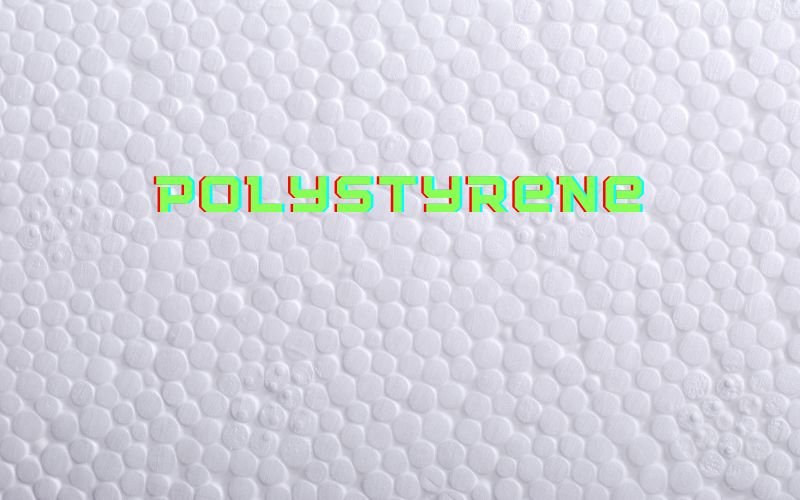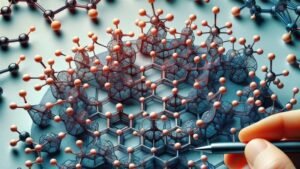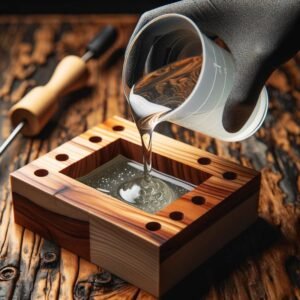Sava lalana
Ny polystyrène (PS) dia mety tsy teny henonao isan'andro, saingy tsy azo lavina ny fisiany eo amin'ny fiainantsika andavanandro. Amin'ny maha polymère sentetika azy, ny PS dia nanamboatra ny lalana ho amin'ny fampiharana marobe, manomboka amin'ny kaopy kafe mety ho tazoninao amin'izao fotoana izao ka hatramin'ny fonosana izay niaro ny fividiananao an-tserasera farany. Ato amin'ity lahatsoratra ity, handeha hamaky ny tontolon'ny PS isika, hijery ny fananany, ny fampiharana isan-karazany, ary ny anjara asany mivoatra amin'ny fitantarana maharitra.
Karazana sy ny toetran'ny polystyrène
Ny polystyrene, amin'ny maha-izy azy, dia mihoatra noho ny plastika. Izy io dia fitaovana misy fananana isan-karazany izay mahatonga azy ho tian'ny indostria isan-karazany. Andeha hojerentsika ny karazany lehibe sy ny toetra mampiavaka azy:
General Purpose Polystyrene (GPPS)
Toetra ara-batana:
- mangarahara: Ny GPPS dia mazava tsara, ka mahatonga azy io ho tonga lafatra ho an'ny fampiharana izay tena mahasarika ny maso sy ny mazava.
- Hentitra loatra: Fitaovana sarotra izy io, na dia mety ho mora vaky aza, izay midika fa mety ho vaky noho ny fiantraikany lehibe.
- Maivana: Ny hakitrony ambany dia mahatonga azy ho tian'ny vokatra izay mampanahy ny lanja.
Toetra simika:
- Solubility: Tsy mety levona anaty rano ny GPPS fa mety levona amin'ny solvents organika sasany.
- Fahamarinana mafana: Mahatanty ny maripana antonony izy nefa manana teboka levona kely, manodidina ny 240°C (464°F).
Polystyrene High Impact (HIPS)
Toetra ara-batana:
- hatevin'ny: Tsy toy ny GPPS, ny HIPS dia matetika manjavozavo na mangarahara.
- Faharetana: Araka ny soso-kevitry ny anarana, ny HIPS dia manana fanoherana mahery vaika kokoa, ka mahatonga azy ho mora vaky noho ny GPPS.
- manovaova: Manolotra fifandanjana eo amin'ny henjana sy ny flexibilité izy io, ahafahan'ny fampiharana isan-karazany.
Toetra simika:
- Solubility: Mitovy amin'ny GPPS, ny HIPS dia tsy mety levona anaty rano fa mety levona anaty solvents organika manokana.
- Fahamarinana mafana: HIPS dia mahatohitra ny mari-pana ambony kokoa noho ny GPPS, miaraka amin'ny teboka levona kely mihoatra ny an'ny GPPS.
Amin'ny ambaratonga molekiola, polystyrene dia polymer vinyl. Raha ara-drafitra, dia rojo hydrocarbon lava izy io, miaraka amin'ny karbaona hafa rehetra mifandray amin'ny vondrona phenyl (peratra misy karbaona 6). Ity rafitra ity dia manampy amin'ny henjana sy ny fanoherana ny hafanana.
Fampiharana isan-karazany amin'ny PS
Ny fampifanarahana ny PS dia miharihary amin'ny fampiharana isan-karazany:
- Fonosana: Eritrereto ny fonosana foam, ny fitoeran-tsakafo, ary ireo kaopy azo ampiasaina miaraka amin'ny entanao.
- construction: Ny PS dia mahita ny lalana mankany amin'ny fitaovana insulation sy ny foam boards, izay miantoka ny tranontsika ho mahomby amin'ny angovo.
- Entan'ny mpanjifa: Ireo kitapo CD manangona vovoka eo amin'ny talantalanao? PS. Ny kilalao lalaovin'ny zanakao ary na ny kojakoja fanariana tamin'ny sakafo hariva omaly? PS rehetra.
Ny fiantraikan'ny tontolo iainana sy ny faharetana
Ny fahaiza-manaon'ny PS dia miaraka amin'ny olana ara-tontolo iainana. Ny tsy fahapotehan'ny biôlôjia azy sy ny fotoana fahalovana maharitra dia niteraka fanairana. Na izany aza, miova ny fitantarana:
- Ezaka fanodinana: Ny fanavaozana amin'ny fanodinana PS dia ahafahana mampiasa indray ity fitaovana ity, mampihena ny dian'ny tontolo iainana.
- Alternatives biodegradable: Mandeha ny fikarohana mba hamoronana akora PS maharitra izay mihalevona haingana kokoa ary mamela fiantraikany kely kokoa amin'ny tontolo iainana.
Fijoroana vavolombelona sy fanehoan-kevitry ny mpampiasa
Ny fihainoana avy amin'ireo izay mampiasa ny vokatra PS isan'andro dia manome fomba fijery voalanjalanja:
“Tiako ny fanamorana ny fonosana PS, saingy manahy momba ny fiantraikany amin'ny tontolo iainana aho.” – Jane D.
“Amin'ny maha-mpanorina azy, ny insulation PS dia nanova lalao. Izy io dia mahomby ary mora apetraka.” – Mike L.
Torohevitra momba ny fampiasana PS tompon'andraikitra
Ho an'ireo izay mampiasa vokatra PS, ireto misy torohevitra vitsivitsy mba hahazoana antoka fa manao ny anjarantsika isika:
- fanamboarana ny: Mitadiava marika fanodinkodinana foana amin'ny vokatra PS.
- Ahena ny fako: Misafidiana safidy azo ampiasaina indray rehefa azo atao.
- Fanariana araka ny tokony ho izy: Ataovy azo antoka fa ariana amin'ny toerana mety ny vokatra PS.
Mijery mialoha: Ny hoavin'ny PS
Mivoatra hatrany ny tontolon'ny PS. Miaraka amin'ny fikarohana mitohy momba ny fitaovana maharitra sy ny fampiharana vaovao mipoitra, mbola tsy tapitra ny tantaran'ny PS. Na fanavaozana amin'ny PS biodegradable izany na fampiasana vaovao amin'ny teknolojia, dia toa mampanantena ny ho avy.
Famaranana
Ny polystyrène, miaraka amin'ireo fampiharana sy fananany maro, dia porofon'ny fahagagana amin'ny siansa maoderina. Rehefa mamakivaky ny tombotsoany sy ny fanamby ao aminy isika, dia zava-dehibe ny mijanona ho vaovao sy manao safidy tsara. Manasa anao izahay hizara ny eritreritrao sy ny traikefanao amin'ny PS amin'ny fanehoan-kevitra etsy ambany.





